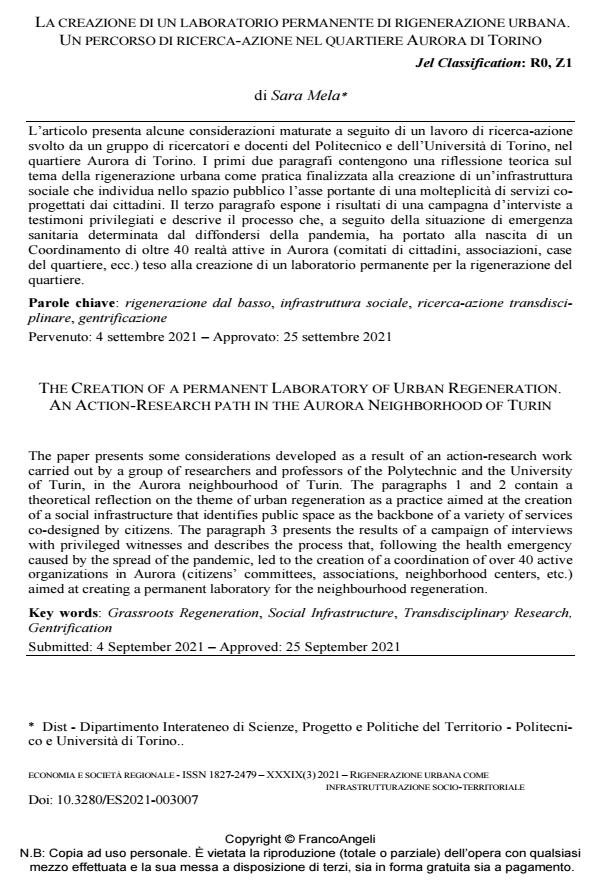The creation of a permanent laboratory of urban regeneration. An action-research path in the aurora neighborhood of turin
Journal title ECONOMIA E SOCIETÀ REGIONALE
Author/s Sara Mela
Publishing Year 2022 Issue 2021/3
Language Italian Pages 11 P. 91-101 File size 261 KB
DOI 10.3280/ES2021-003007
DOI is like a bar code for intellectual property: to have more infomation
click here
Below, you can see the article first page
If you want to buy this article in PDF format, you can do it, following the instructions to buy download credits

FrancoAngeli is member of Publishers International Linking Association, Inc (PILA), a not-for-profit association which run the CrossRef service enabling links to and from online scholarly content.
The paper presents some considerations developed as a result of an action-research work carried out by a group of researchers and professors of the Polytechnic and the University of Turin, in the Aurora neighbourhood of Turin. The paragraphs 1 and 2 contain a theoretical reflection on the theme of urban regeneration as a practice aimed at the creation of a social infrastructure that identifies public space as the backbone of a variety of services co-designed by citizens. The paragraph 3 presents the results of a campaign of interviews with privileged witnesses and describes the process that, following the health emergency caused by the spread of the pandemic, led to the creation of a coordination of over 40 active organizations in Aurora (citizens’ committees, associations, neighborhood centers, etc.) aimed at creating a permanent laboratory for the neighbourhood regeneration.
Keywords: Grassroots Regeneration, Social Infrastructure, Transdisciplinary Research, Gentrification
Jel codes: R0, Z1
Sara Mela, La creazione di un laboratorio permanente di rigenerazione urbana. Un percorso di ricerca-azione nel quartiere aurora di Torino in "ECONOMIA E SOCIETÀ REGIONALE " 3/2021, pp 91-101, DOI: 10.3280/ES2021-003007